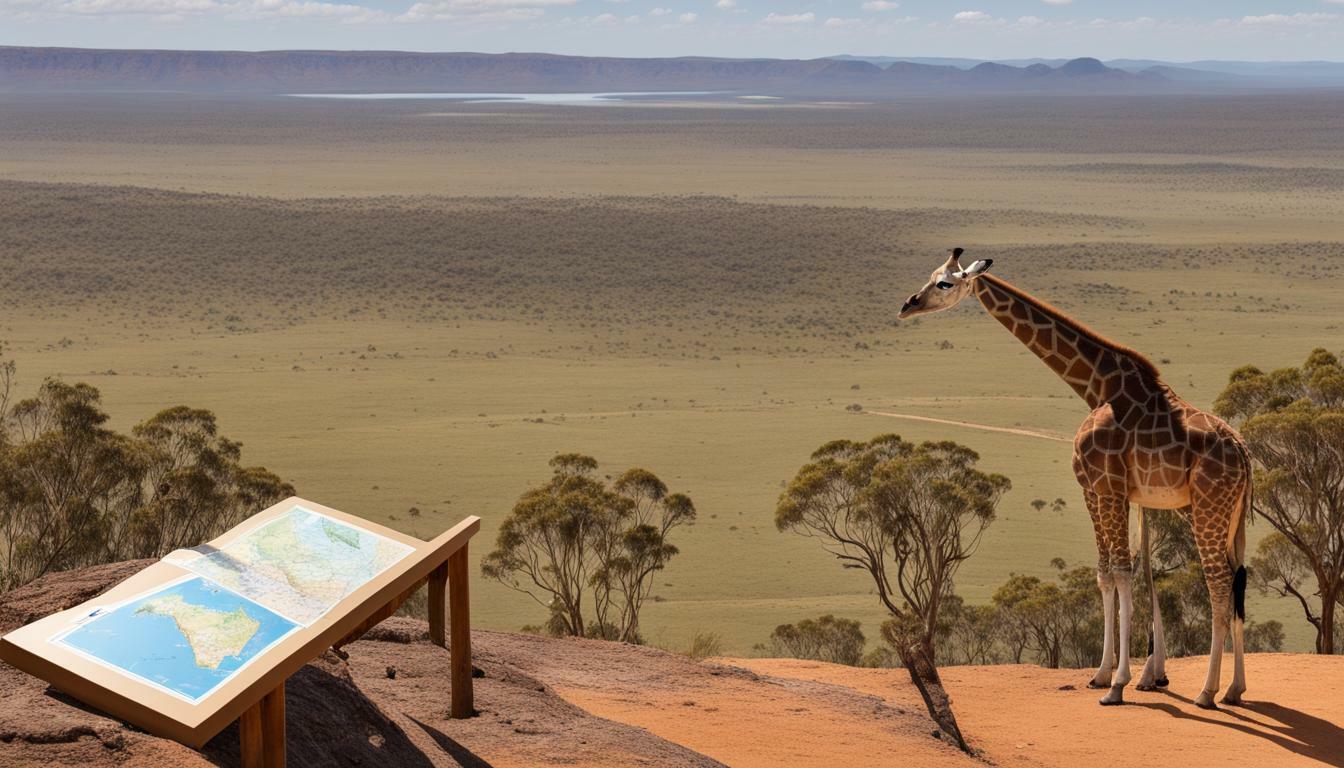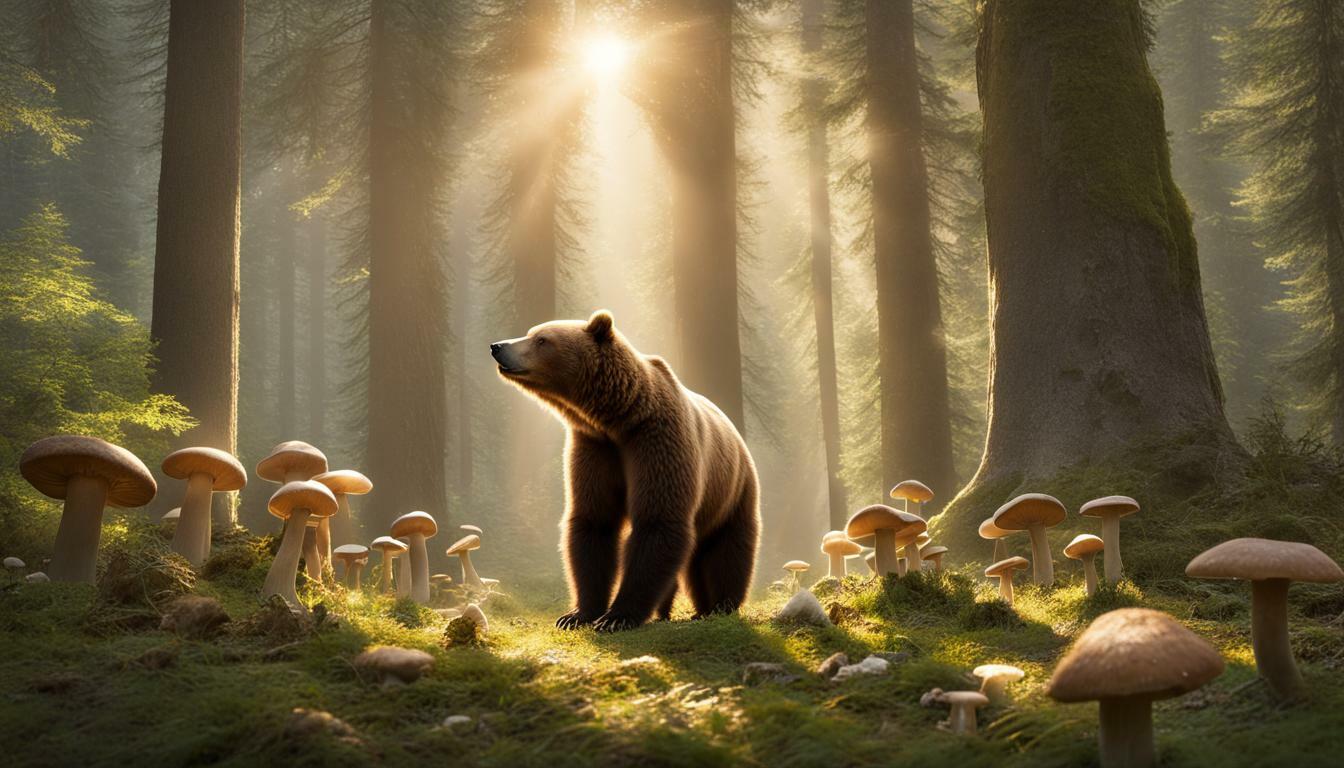Are There Giraffes In Australia? Explore the Answer Here

Table of content:
- Why Are There No Giraffes in Australia?
- What Other Iconic African Animals Are Missing from Australia?
- What Exotic Animals Do Live in Australia?
- What is Australia’s Largest Native Land Mammal?
- Why Does Australia Lack Many Large Mammals?
- What are Some Unique Australian Animals?
- Why Has Australia Prioritized Biosecurity?
- Final Thoughts
Australia is home to some of the most unique and fascinating animals in the world. However, one iconic African animal is noticeably absent from the country – the giraffe. Giraffes are the tallest mammals on earth and are native to the open savannahs and grasslands of Africa. So why don’t these towering creatures exist in the wild landscapes of Australia?
Why Are There No Giraffes in Australia?
There are a few key reasons why giraffes have never inhabited Australia:
- Geographic Isolation – Australia has been geographically isolated from other continents for millions of years. This allowed unique marsupials like kangaroos and koalas to evolve in Australia, but prevented the natural migration of giraffes and other African wildlife.
- Unsuitable Habitat & Climate – The arid outback and desert landscapes of Australia are not optimal habitat for giraffes. Giraffes thrive in African savannahs with abundant acacia trees and rainfall. The climate and vegetation of Australia differs considerably.
- Importation & Quarantine Laws – Strict quarantine laws in Australia prevent the importation of exotic animals like giraffes. Concerns about disease, environmental impact, and biosecurity have prevented giraffes from being legally introduced.
So in summary, the combination of isolation, unsuitable environments, and importation restrictions helps explain why giraffes have never called Australia home.
What Other Iconic African Animals Are Missing from Australia?
Giraffes are not the only iconic African mammals absent from Australia. Other notable missing species include:
- Elephants – The largest land mammals on earth are another quintessential African wildlife species not found in Australia.
- Lions, Leopards & Cheetahs – Big cats like lions, leopards, and cheetahs thrive in the African savannah but are not present across Australia.
- Hippos & Rhinos – These massive megafauna species are common sights in African rivers and plains but completely absent across Australia.
- Zebras & African Buffalo – Iconic African grazers like zebras and Cape buffalo also have not populated Australia.
So in general, most of the famous megafauna from Africa have not inhabitated Australia due to geographic isolation and ecological differences. Australia does have its own unique megafauna like kangaroos, but lacks many classic African animal groups.
What Exotic Animals Do Live in Australia?
Although giraffes and other African species are not found in Australia, there are some surprising exotic animal species that have formed wild populations:
- Camels – Wild dromedary camels thrive in the Australian deserts after being introduced for transport in the 1800s.
- Water Buffaloes – Feral Asian water buffalo populations are found across Northern Australia.
- Wild Donkeys – Large numbers of wild donkeys of African origin now roam Australian rangelands.
- Deer – Various deer species like sambar and rusa deer have established wild populations after introductions.
- Wild Horses – Australia has over 400,000 wild horses known as brumbies descended from domesticated stock.
- Foxes & Rabbits – These European species have become widespread invasive pests across Australia.
So while no giraffes or elephants call Australia home, feral populations of camels, donkeys, buffalo and other exotic species roam certain Australian habitats. Not all introductions have been successful though, as Australia’s climate and landscape are still not ideal for many foreign species.
What is Australia’s Largest Native Land Mammal?
In place of African megafauna like elephants and giraffes, Australia does have its own suite of unique large mammals:
- Red Kangaroo – The largest marsupial in the world, red kangaroos can stand over 6 feet tall and weigh 90kg.
- Eastern Grey Kangaroo – Slightly smaller than reds, eastern greys are abundant across eastern Australia.
- Common Wombat – Weighing up to 35kg, these stocky marsupials are Australia’s largest burrowing herbivore.
- Brumby – Feral horses in Australia weigh 300-600kg and roam in remote habitats.
- Emu – The second largest bird in the world behind the ostrich, emus can reach up to 60kg.
So while not matching the proportions of Africa’s elephants and giraffes, kangaroos, wombats, brumbies and emus are Australia’s largest land animals. These natives are iconic Australian species found across the diverse landscapes of the island continent.
Why Does Australia Lack Many Large Mammals?
Several theories help explain why Australia is missing many of the large mammal groups found on other continents:
- Extinctions – Australian megafauna species like giant wombats and marsupial lions went extinct between 40,000-50,000 years ago. The causes are still debated but may include climate change, human hunting, and competition from invasive species. This removed Australia’s populations of gigantic mammals.
- Geographic Isolation – Australia’s distance from other continents prevented large mammals from naturally colonizing over land bridges during previous eras. Mammals could not migrate between continents.
- Climate & Habitat Differences – The tropical northern regions of Australia provide some savannah-like habitats. But the arid center and temperate south offer vastly different and less hospitable environments for many large mammal groups.
In summary, Australia’s unique history of megafauna extinctions, geographic isolation, and ecological conditions help explain the absence of many large mammal groups that thrive on other continents. Smaller marsupials evolved to fill many niches instead.
What are Some Unique Australian Animals?
Although Australia lacks many large African or Asian mammals, the island continent is home to an incredibly unique array of endemic wildlife found nowhere else on earth:
- Kangaroos – A flagship animal of Australia, these iconic pouched hoppers come in over 50 different species. Red kangaroos, eastern greys, and wallaroos are abundant across Australia.
- Koalas – These cuddly arboreal marsupials feed exclusively on eucalyptus leaves and sleep up to 20 hours per day.
- Wombats – Stocky burrow-dwelling herbivores that emerge to graze on grasses and shrubs at night across Australia.
- Kookaburras – The famous laughing kookaburra bird species makes its iconic call at dawn and dusk in Aussie forests.
- Platypus – This bizarre egg-laying mammal with a duck-bill and venomous spur is an unlikely but uniquely Australian creature.
- Echidna – Along with the platypus, the spiky egg-laying echidna mammal is another member of Australia’s extraordinary monotremes group.
- Bilby – These endangered bandicoot-like marsupials with large ears once thrived across Australia and survive in remote areas today.
In summary, Australia hosts an abundance of endemic marsupials, monotremes, birdlife and other animal groups that have evolved in isolation over millions of years. These unique species are found only on the diverse island continent.
Why Has Australia Prioritized Biosecurity?
Australia is an island continent with a largely isolated and unique ecosystem inhabited by endemic flora and fauna. Introduced exotic species have endangered many native Australian animals and caused environmental damage in the past. As a result, Australia has implemented very strong biosecurity measures and regulations:
- Strict Import Laws – Australia’s geographic isolation allows stringent inspection procedures for all imported live plants and animals. Any potential invasive species are denied entry.
- Quarantine – Travelers must declare all biological goods and materials and have them inspected at customs. Australia even maintains quarantine facilities for detected exotics.
- Pest Management – Landowners are obligated to control declared invasive plants and animals like rabbits and cane toads that may harm native species.
- Monitoring – Early detection programs closely monitor environments for possible newcomer exotic species. Rapid responses aim to remove invasives before populations establish.
In summary, proactive biosecurity policies attempt to protect Australia’s fragile ecosystems and endemic wildlife from threats posed by foreign flora, fauna and diseases. These measures help explain why exotic imports like giraffes have been avoided.
Final Thoughts
To summarize, giraffes and other iconic African megafauna are not found in Australia for a combination of historical, geographic, climatic and regulatory reasons. Australia’s isolation, arid interior, extinctions of giant mammals, and strict biosecurity measures have prevented the successful import and establishment of most exotic species. So don’t expect to see any towering giraffes on your next Aussie wildlife safari. But take the chance to appreciate Australia’s abundance of endemic flora and fauna that have evolved over millennia in isolation!
Welcome. I’m Adreena Shanum, the proud owner of this website, and I am incredibly passionate about animals, especially poultry. I founded adreenapets.com as a labor of love, stemming from my desire to share my knowledge and experiences with poultry enthusiasts worldwide.




